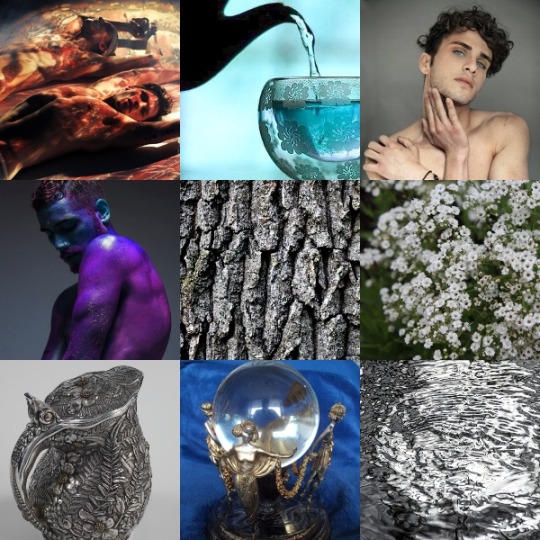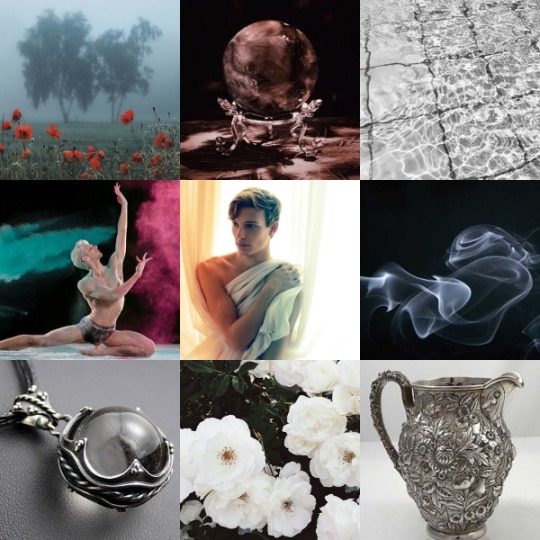#and tom bombadil is in fact irmo's
Text

Face designs for the Valar!
Each of the Valar has unique face pattern/marking things shared by their Maiar. Some disciples of the Valar (like when Celegorm joined the Hunt) tattoo their faces to match.
Melian's markings match Vana's, and are passed down through her descendants.
#silm#silmarillion#valar#valier#maiar#side notes:#alatar is orome's and pallando is nessa's#melian is vana's#and tom bombadil is in fact irmo's
126 notes
·
View notes
Photo




Silmo
Maia of Lorien, Guardian of Silpion
Silmo is an Ainu from Tolkien’s early works who was associated with the White Tree of Valinor. The Vala Irmo/Lorien who “loved the youthful Silmo” chose him to be the guardian of The White Tree, which in this stage of Tolkien’s writings was called Silpion, to keep it watered. In this sense he is essentially a male, lunar copy of Arien/Urwen/Urwendi. But while Arien was chosen to guide the Sun upon its creation, the Valar chose Ilinsor to guide the Moon instead of Silmo even though Silmo begged to be given this task. They chose Ilinsor because he was a wind spirit who served Manwe and Varda and loved snows and starlight and assisted Varda in her works, so he would be more familiar with the regions of the sky than Silmo, who spent all his time on the ground. Silmo isn’t mentioned after this and neither Silmo nor Ilinsor appear in Tolkien’s later works; Tilion is the Maia in The Silmarillion who is associated with the Moon.
Silmo’s name comes from the Quenya root sil, which means to shine with white or silver light, and emphasizes how closely he was connected to the tree Silpion (later Telperion) whose name comes from the same root. In Tolkien’s early works there is also a pot called Silindrin that stored the collected dew of Silpion/Telperion. It’s also probably not a coincidence that his name also contains “ilm”, a word for starlight which can be found in the names of Ilmen, Ilmare, and Ilmarin. Ilmen refers to the region of the sky where the stars, Sun, and Moon are, while Ilmare is the handmaiden of Varda and Ilmarin is the mansions on top of Taniquetil where Manwe and Varda live. Tolkien in turn got the inspiration for this root from Finnish ilma (air) which appears in the Finnish epic Kalevala in the names of the characters Ilmatar and Ilmarinen. The Gnomish (earlier name for Noldorin) version of Silmo’s name was Thilim.
The Valar’s reason for passing over Silmo as guardian of the Moon is intriguing since Arien, who they chose as guardian of the Sun, had essentially the same role as Silmo, spending her time watering the golden tree Laurelin. Like Silmo, Arien was associated with a Vala (Vana) who wasn’t numbered among the Aratar, the eight most powerful of the Valar. Even as Silmo disappeared and Vana’s role “shrank” in Tolkien’s later drafts, Arien has remained the guardian (and only candidate mentioned) of the Sun.
Silmo and Arien’s roles as the guardians of the Two Trees also reflect how the Valar Irmo/Lorien and Vana were much more closely connected to the Trees in the early drafts than they are in the published Silmarillion. Lorien, who was associated with dreams, prophecy, spirits, and magic, would gaze into the pot Silindrin (which contained the collected dews of Silpion) and saw many visions. This probably reflects the fact that most dreams occur during the night when the moon is out, and the fact that the moon has long been associated with magic and the supernatural.
Silmo is an example of how Tolkien’s perception of the character who guided the Moon went through many revisions during his writing process. In the early works we have both Silmo (associated with dreams and visions; servant of Lorien) and Ilinsor (connected with snows, air and wind, and stars; servant of Manwe and Varda) while later on there is the Maia Tilion, who is a hunter skilled in archery who loves the color silver and is one of Orome’s Maiar. The Book of Lost Tales also mentions a being living on the Moon called Uolë Kúvion by the elves, though not much is known about him. The folklore of the Hobbits also mentions The Man in the Moon, an old being who secretly lives on the Moon in a tower. This same character occurs in some of Tolkien’s non-Middle-earth stories such as Roverandom, The Adventures of Tom Bombadil, and Letters From Father Christmas. In contrast, Arien/Urwen/Urwendi has been the guardian of the Sun throughout Tolkien’s writings and her details have pretty muched remained the the same since the beginning.
Silmo as a youthful, male character who is admired by an older, also male character (Lorien) is also intruiging given Tolkien’s Catholic faith, which he was heavily devoted to and whose influence can be seen in his works, especially in many of his female characters.
#Silmo#Silmo Aesthetic#Silmo Moodboard#Ainur#Maiar#Lost Valar#Lorien Maiar#Irmo Maiar#Silpion#Silindrin#Telperion#Lorien#Irmo#Silmarillion#Book of Lost Tales#Tolkien#Tolkien Moodboard#tolkien aesthetic#Tilion#Ilinsor
32 notes
·
View notes
Photo




Olórin
The Dreamer, The Visionary
Later names: Gandalf, Mithrandir, Incánus, Tharkûn, Láthspell
Later Surnames: The Grey, Greyhame, Stormcrow, The White, The White Rider
Olórin was originally a Maia who was associated primarily with Manwë and Varda, although he frequently visited Nienna and also spent time with Irmo/Lorien. His name comes from a Quenya root meaning “dream or vision” and he was strongly associated with light and fire. He would either disguise himself as an elf or go amongst them unseen to provide them with wisdom, hope, and guidance.
When the Valar decided to send a group of Maiar disguised as old wizards to help the peoples of Middle-earth resist Sauron, Olórin was one of those chosen by the council. He was reluctant to go at first, believing himself unprepared and unworthy for the difficult task mainly because he feared Sauron. But Manwë commanded him to go as the third Istari, and Varda remarked that he was not the third, indicating that she and her husband (accurately) saw him as being superior to the others who had been chosen. This statement was noted by Curunir/Curumo (Saruman) and thus his resent towards Gandalf began before they had even arrived in Middle-earth.
When he arrived in Middle-earth Olórin took the form of a wandering old man who wore the color grey. According to some versions of its story, Yavanna gave the Elessar (elfstone) to Olórin to bring to Middle-earth as a sign that the Valar had not forgotten its people. He gave this to Galadriel and prophesied that she would eventually pass it on to someone else. This became true when Galadriel gave it to Aragorn during the Fellowship’s stay in Lothlorien as a sort of early wedding present, since he would eventually marry her granddaughter Arwen. He wore it from then on, and when he became king he took the name Elessar.
Olórin traveled amongst the many peoples of Middle-earth, providing guidance in their resistance to Sauron. One of his most common names was Gandalf, which translates to something like “wand elf” due to his use of a staff and the misconception amongst many men that he was an elf. This was one of his most common names, and was used by both men and hobbits. Among the elves he was known as Mithrandir, which means Grey Pilgrim or Grey Wanderer. Another name given to him by men, Incánus, had different meanings that Tolkien couldn’t decide on and could mean either North-Spy (as a name given to him by the Haradrim) or Mind-Ruler. Among the dwarves he was Tharkûn, meaning either Grey-man or Staff-man. The people of Rohan called him Greyhame, which means Greycloak, as well as The White Rider when he rode his horse Shadowfax. He was also given names such as Stormcrow and Láthspell (ill-news) in reference to the fact that he often appeared at tense times bringing troubling news. Hence, his visits were often seen as a bad omen, even though he himself was there to provide assistance. In Tolkien’s earlier works, his name was Bladorthin, while Gandalf was the name of the character who eventually was named Thorin Oakenshield. Bladorthin instead became the name of an obscure king of a great region that traded with Erebor; his race and the location of his kingdom aren’t given by Tolkien and have sparked much speculation and debate among scholars.
In addition to the Elessar, Gandalf also possessed the sword Glamdring, which allegedly once belonged to king Turgon of Gondolin. He also wielded Narya, The Ring of Fire, one of the three elven rings of power which was given to him when he arrived in Middle-earth by Cirdan the Shipwright, who recognized his divine nature despite his elderly appearance. His possession of it became known to Saruman and was another source of his resentment towards Gandalf.
Olórin/Gandalf played a major role in the War of the Ring, and his most notable actions included guiding the Fellowship, freeing King Theoden from Saruman’s influence, rescuing Faramir from Osgiliath and later from his own father, leading the defense of Minas Tirith, and rescuing Frodo and Sam from Mount Doom. After the War of the Ring was over, he crowned Aragorn king of the reunited realms of Gondor and Arnor. He later spent an extended time visiting with Tom Bombadil before he eventually returned to Valinor along with Elrond, Galadriel, Bilbo, and Frodo.
He could be stern and temperamental at times, but he also had a jovial side which he may have picked up from the large amount of time he spent among hobbits. He enjoyed smoking pipeweed and blowing smoke rings, and he was associated with celebrations due to his impressive fireworks. Gandalf was also well attuned to nature and was said to have an even better relationship with birds then his friend Radagast the Brown.
#Olórin#Olorin#Olórin Moodboard#Olórin Aesthetic#Gandalf#Mithrandir#Incanus#Tharkun#Incánus#Tharkûn#Gandalf the Grey#Gandalf the White#Ainur#Maiar#Istari#Tolkien#Tolkien Moodboard#The Lord of the Rings#The Hobbit#Elessar#Elfstone#Narya#Glamdring#Shadowfax
31 notes
·
View notes